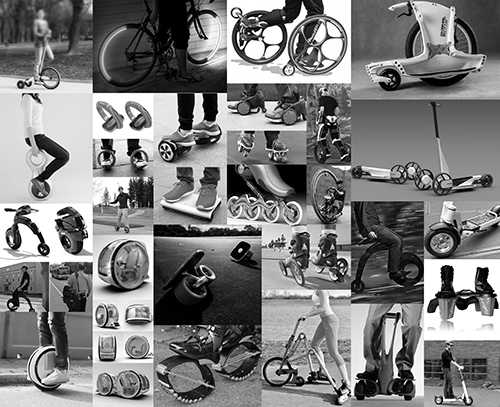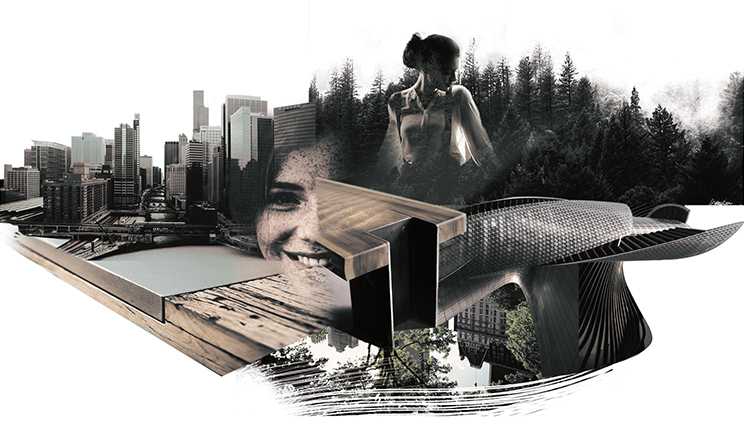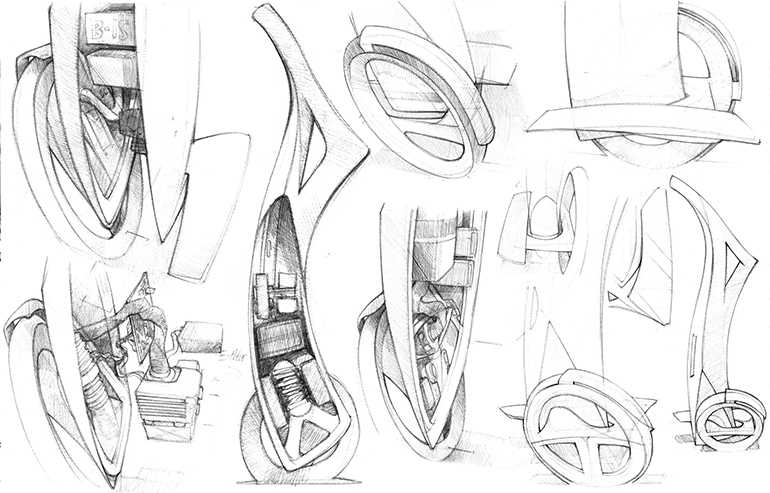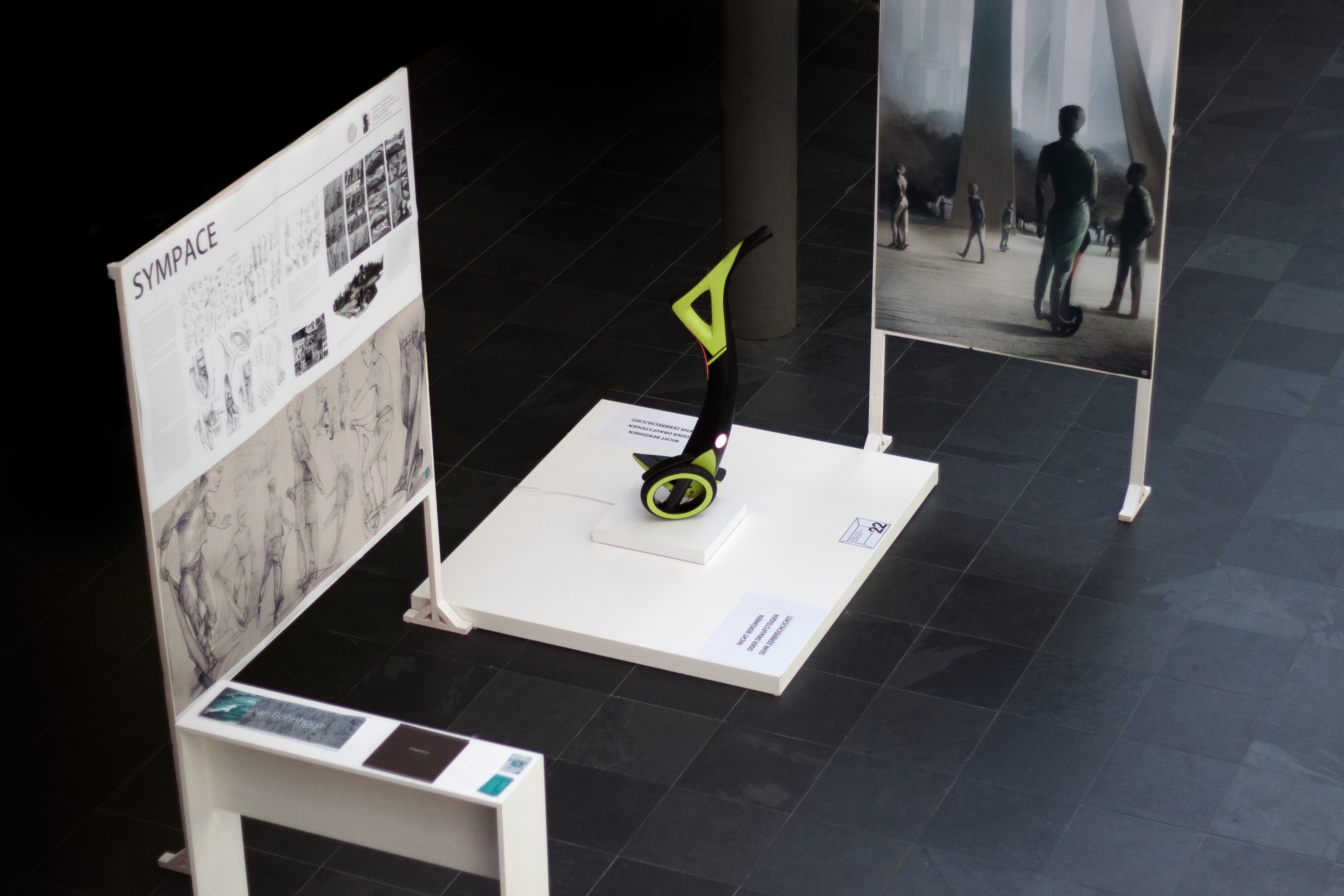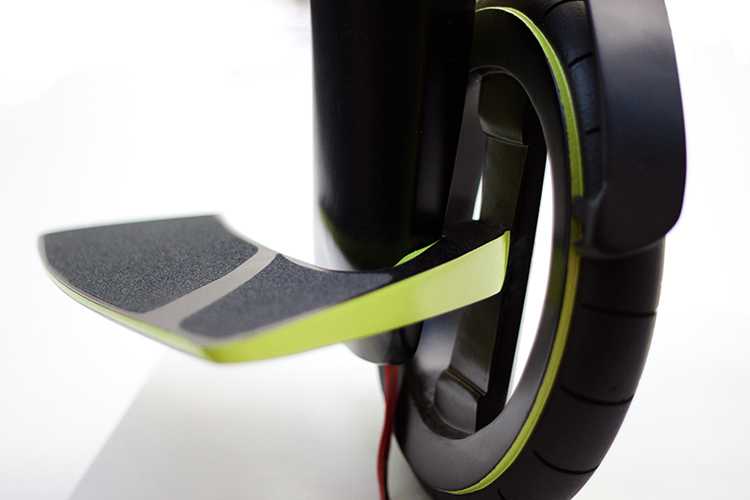Sympace - bachelor's thesis
Jun. 2016
One wheeled vehicle, Future city transport, Problem of high traffic
Professor : P. Naumann
Sympace is a visionary one wheeled vehicle for future cities.
The concept is based on a scenario which describes future cities. In the city centre there are no more cars or such allowed. People are only able to reach the centre with public transportation or small electronic vehicles.
This decision is the consequence of the increasing air pollution and traffic. There are some benefits that come with banning cars from city centres. Firstly, there is no need for wide streets which holds the possibility for a different cityscape. Secondly the quality of living there improves a lot. The danger of traffic accidents is also reduced.
The following shows the development of a vehicle that accomplishes these criteria.
Research
The market research shows all the current relevant competitors. There is a variety of mechanical working products. In order to acquire a maximum of comfort and speed with a minimum of effort the Sympace is planned with an electric engine. It is supposed to be easy to use and needing as little space as possible.
Sketching
After the market research and the mood board the sketching began. The development can be seen from left to right.
The first key sketches are shown at the top left corner. Sketch A was the most inspiring of them. The following sketches on the right describe the detailing on this idea. The design is asymmetrical. That means it works on one side of the body. There is a handle at the top and a rest for the leg at the middle part. The largest provides a solid and stable stand. The vehicle is driven with an electric engine. In order to control the one-wheeler it is permanently balanced with gyroscopes.
The drive of the vehicle is also special. The wheel is divided into segments which enable it to move both in and lateral to the driving direction. With that function, the gyroscopes are able to control every degree of freedom.
Modelling
The modelmaking was a very intense and highly fascinating process. It was the most important part for a solid 3d prototype.
There were many stages of modelling. At first the sketches were used as reference for a 1:3 scale foam model. Building this first 3d version was quite challenging due to inaccuracies of the drawings. There are always difficulties coming up building it in 3d because every face needs to be thought of.
Following this model, the next step was to consider the real proportions and values for the 1:1 scale model. This rough mock-up is made of wood. The measures were ascertained empirically. Identifying the measures was followed by building a CAD Model in Autodesk Maya in order to get high quality renderings. At this stage, further refinements were achieved. The CAD modelling was the foundation for the final 1:1 scale model. Generated Stencils played a crucial part in building this final model. In addition, it was lacquered in the final colours of the materials.
Finalizing
Sympace’s final appearance is modern, elegant and organic. Its shape is made to fit the human body.
It uses an electric engine and is balanced automatically at all times with gyroscopes. The vehicle is steered through the shift of the driver’s weight. The wheel also works special. It is divided into segments which allows it to move in driving direction, and also lateral to it.
The Sympace is also provided with a horn for dangerous situations. In addition there are wind wholes to indicate the vehicle approaching, and also giving an acoustic feedback about the speed of the Sympace. The appropriate visibility is provided with the front and rear light.

